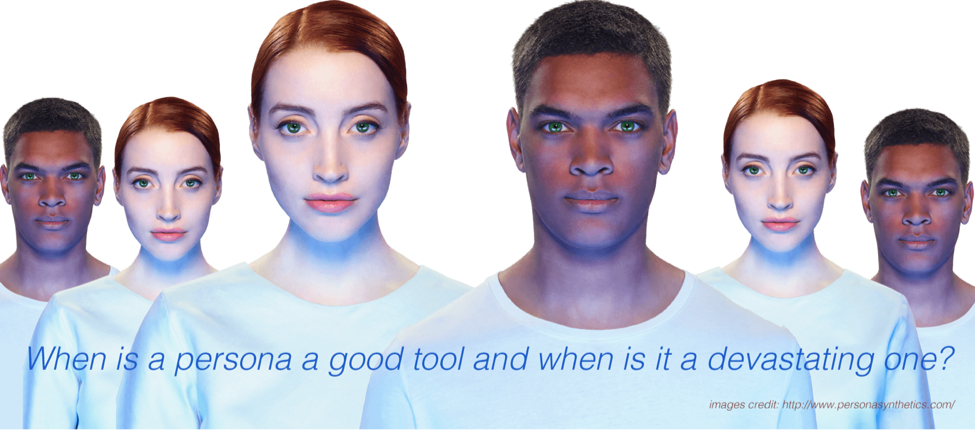While I was first learning the process of developing a product prototype, almost everything made sense to me—that is, except for one thing: developing personas. How would I know who uses a certain app or who would buy a certain kind of product, I thought. Why would a corporation invest time and money toward building personas? What is a persona, anyway?
I had to look it up: personas are fictitious characters that are created to represent the different user types within a targeted demographic that might use a site or product. When we use the term persona, we’re not referencing an actual person, but an idea of a person based on data that we collect. However, as I’ve discovered over the years, companies often refer to personas the same way they refer to a live human being, as if they were one in the same.
True persona development for user experience wasn’t defined until 1990, but I think it existed in some informal way before then—this growing realization came to me while binge-watching Mad Men. The persona development process has been in place since marketing caught on in the mid-20th century, if you (like I do) believe the story of Mad Men really happened—or, okay, at least that it's based in accurate depictions of that era. During their pitches, we often see Peggy or Don transition into the person who would use the client’s product, and explain why. They don’t use pictures, descriptions, or ppt stacks. They act it out. They become that imagined buyer, much like what an actor does to become a character. Their process made sense to me; it seemed deeper in understanding, more honest, more to the point. More human.
Human Touch
When a company uses live customer feedback, the product shows enormous potential because building decisions are quantified based on actual use. Additionally, when a company uses real people for testing, the product reacts positively. We know humans will give accurate feedback—there are no fake humans (as far as I know…). Live feedback, questions and opinions are essential to establishing what works and what doesn’t work with the website, the app, or the product you’re developing.
If actual potential consumers interact with a product during the discovery process, the developer has a clear path toward creating something that relates to its intended user.
 image credit personasynthetics.com
image credit personasynthetics.com
Your Spidey Sense Won’t Work Here
“Maybe you think you don’t need buyer personas because you already know everything there is to know about your customers. Well… you really don’t. You are not your customer and this assumption can cost you.” - Safa Khudeira
When a company uses personas based on intuition, the product suffers—because it’s built on false presumptions. These personas are created by the company themselves based on assumptions of which kinds of people need which products. This is a skill-less tactic that does more ROI harm than good, and now the persona has become a devastating tool. Remember: personas can’t give feedback, and they can’t ask questions; therefore, they can’t have opinions, and they can’t make judgment calls.
We Don’t Want Your Stinkin’ Personas
“If you’re just going to guess on the personas, why bother?” - Jared Spool
There are a few rebels out there who claim they don’t use personas. Their reasoning is that they meet with live clients who give live feedback, or they make decisions based on their own opinions as people in the world. Additionally, they claim to use strategists who look at live client needs—which is kind of like saying they use personas and they use them well. A product cannot grow into fruition if there is nothing to work off of. Rebels have created a system that they are confident works for them: a persona tool based on actual people’s ideas.
Moving Forward
Humans and well-built personas are designed to give you the following accurate feedback:
- Answers that allow you to make decisions based on your end goal
- Awareness of the limitations and strengths of your end product
- Understanding of ambiguities within the user experience
- Intelligent and clear metric towards achieving your end goal
Final, Not Too Deep, Thoughts
More than simply a collection of client data, humans are meant to buttress the empathy of UX design. They are asked to interact with your product, and it’s up to you how you create that environment. A well-built persona can do the same thing. Since we are who we are, no other method to date is as accurate as the human touch. If you embrace empathy and allow a more human process, you will likely produce surprising results that will guide you towards a successful product.


